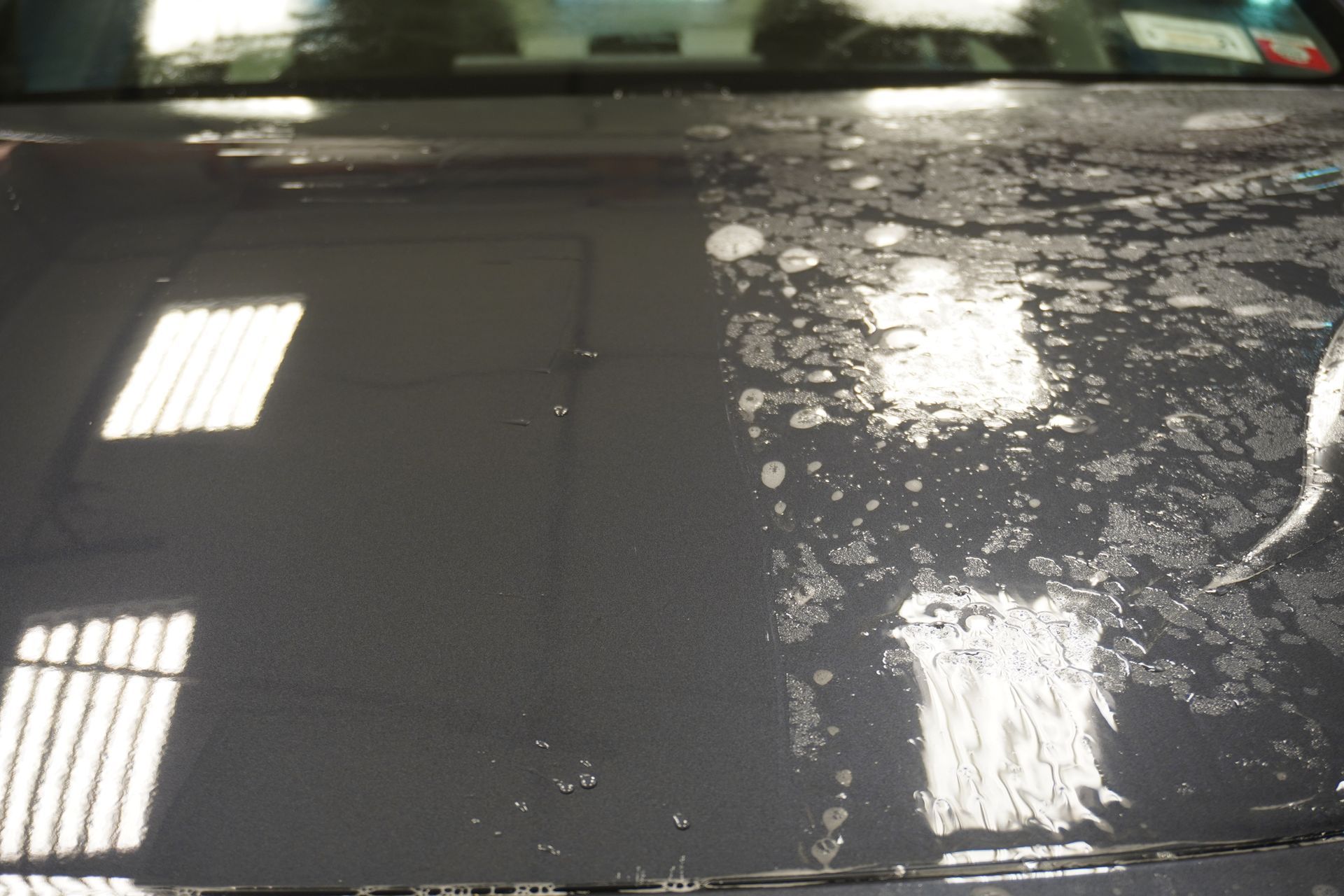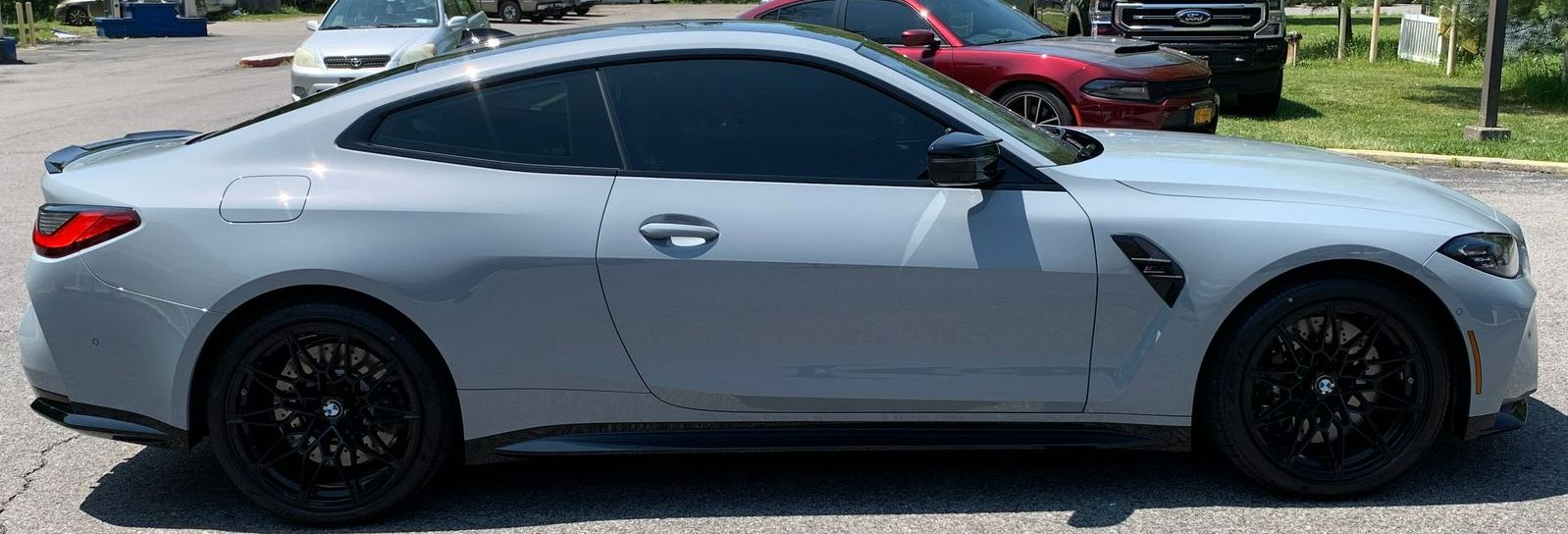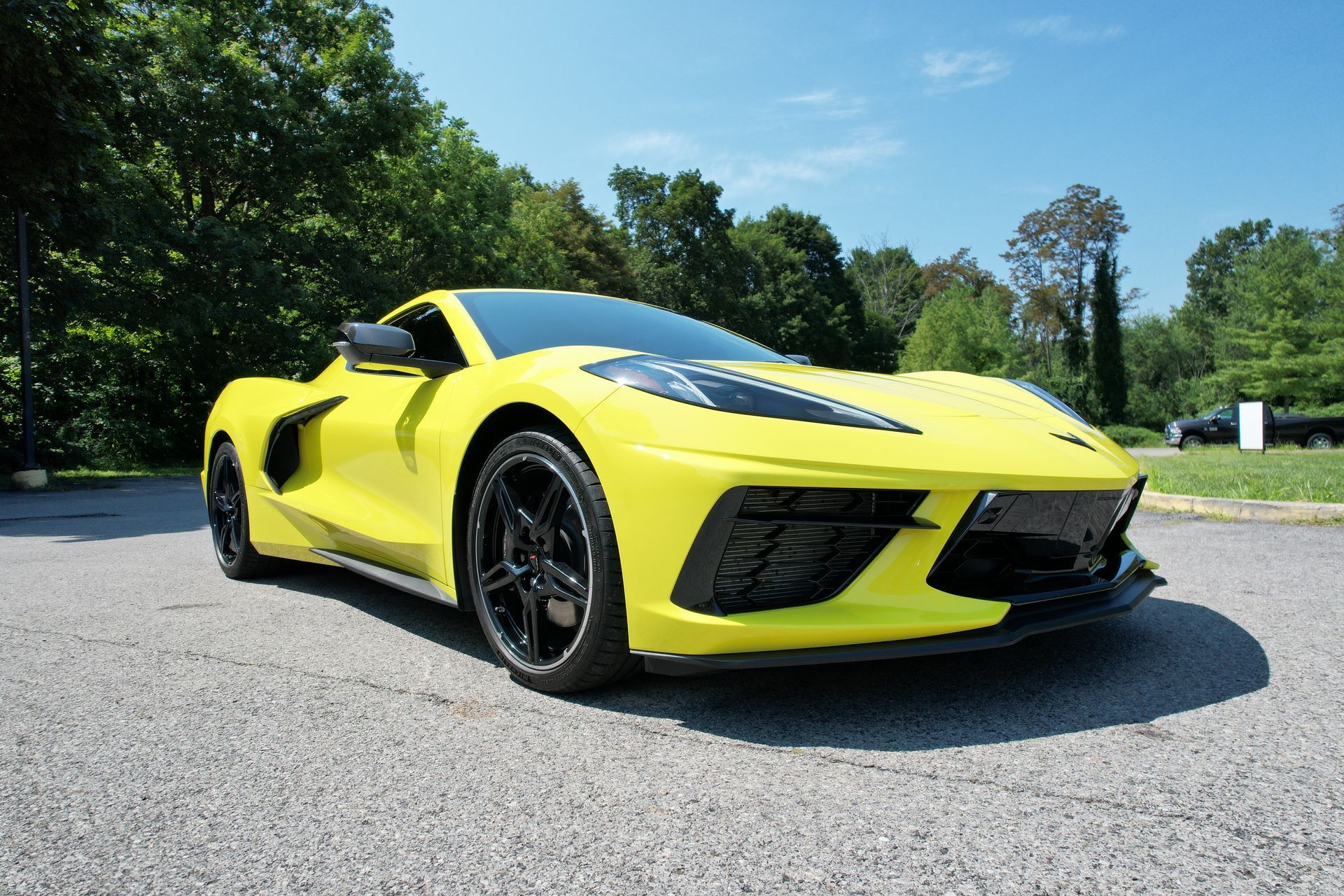KOD Auto Films Blog

By Timothy Roberts
•
November 19, 2023
KOD Auto Films has introduced an automotive paint protection film package the will help promote affordable car paint protection for everyday drivers. What exactly is Value shield? Value shield is a ppf package that was developed by streamlining the paint protection film installation and develop methods that cuts cost and improve efficiency. It is not its own film but merely a process that produces results. If Value Shield is not ppf which ppf do you use on the install? We use top brands in the industry that have minimal 10 year warrantees. One of the reasons we are able to offer Value Shield is that we do no disclosed the brand of film we are using, however we guarantee it is a top quality brand and is a 10 year rated protective film.

September 29, 2023
Every car owner dreams of maintaining the pristine look of their vehicle as if it just rolled out of the showroom. However, our cars are constantly exposed to various environmental and road elements that can easily mar their appearance. Enter Paint Protection Film (PPF). Often regarded as a car’s invisible shield, PPF is fast becoming an essential investment for car enthusiasts and everyday drivers alike. So, what exactly are the benefits of Paint Protection Film, and why is it so crucial for safeguarding your car's paint? 1. Superior Protection Against Scratches and Chips: Perhaps the most significant advantage of PPF is its unparalleled protection against scratches and stone chips. Roads can be unpredictable, with debris, small stones, or even sand causing minute damages. PPF is a tough, clear barrier that takes the hit for your car's paint, ensuring minor accidents don't leave a lasting mark. 2. Guards Against Environmental Damage: Environmental pollutants can be particularly harmful to your car's paint. Bird droppings, tree sap, and even acidic rain can deteriorate the paint quality over time. Paint Protection Film acts as a barrier against these pollutants, ensuring that your vehicle’s paint remains unharmed and vibrant for longer. 3. UV Protection: Prolonged exposure to the sun can lead to your car’s paint fading over time. Most high-quality PPFs come with UV inhibitors that protect the paint from harmful ultraviolet rays, ensuring the color remains radiant and doesn't lose its lustre prematurely. 4. Enhances Car Resale Value: A vehicle with chipped or faded paint can significantly decrease its resale value. With PPF, the paint remains protected and fresh, ensuring that when it's time to sell, you'll get a better price due to the car's impeccable exterior condition. 5. Self-healing Properties: Many modern PPFs have self-healing properties. This means minor scratches or swirl marks that usually occur from cleaning or brushing against your car can heal themselves under heat. Whether it's from the sun or warm water, these marks vanish, keeping the film and the paint underneath looking pristine. 6. Easy Maintenance: With a PPF, you no longer need to invest heavily in specialized cleaning solutions or frequent waxing. The film has a slick surface that repels dirt and debris, making cleaning more manageable. Moreover, some PPFs provide a hydrophobic effect, ensuring water beads up and rolls off, minimizing water spots. 7. Cost-Effective in the Long Run: While the initial investment in PPF might seem significant, it’s a long-term saving strategy. The costs associated with paint repairs, touch-ups, and decreased resale value far outweigh the one-time cost of getting a high-quality PPF applied. 8. Invisible Protection: One of the significant advantages of PPF is its transparency. Once applied, it's almost invisible, ensuring that the beauty of your car's paint shines through without any compromise. This means you can enjoy the benefits of protection without altering your vehicle's appearance. 9. Customizable: Apart from the standard clear films, there are various customizable PPF options available. Whether you want a matte finish or added tint, you can achieve a unique look for your vehicle while enjoying all the protection benefits. 10. Removable and Replaceable: If ever the PPF gets damaged or wears out, it can be removed without damaging the original paint. This ensures that you can always replace the film to maintain the optimal protection for your car. Why PPF is Essential for Paint Protection: The external paint of your vehicle isn’t just about aesthetics. It acts as a protective layer against rust and corrosion. Damages to this layer can expose the metal underneath, leading to more significant problems than just an unsightly appearance. PPF acts as an added layer of defense, ensuring the longevity of both the paint and the metal underneath. Moreover, a vehicle is a significant investment. Just as you'd take measures to protect other valuable assets, your car should be no different. PPF acts as an insurance against the daily wear and tear, ensuring your vehicle looks as new as the day you bought it, even years down the line. Conclusion: In today’s world, where our vehicles are constantly exposed to a myriad of potentially damaging elements, Paint Protection Film emerges as an essential guardian. It not only maintains the aesthetic appeal of our cars but also ensures their longevity and durability. For those who take pride in their vehicles and seek to maintain their value, PPF is undeniably a wise and valuable investment.

September 19, 2023
Introduction Window tinting has been a popular automotive upgrade for decades, offering a blend of aesthetic appeal and functional benefits. When considering tinting options for your vehicle, you'll find a range of materials and technologies to choose from. In this blog post, we’ll break down the major types of window tinting and specifically focus on Ceramic and Carbon films. Let's explore their differences, pros, and cons. Types of Window Tint Before we deep dive into Ceramic and Carbon films, it’s essential to understand the primary types of window tints available in the market. Dyed Tint This is the most basic and economical option. It provides reasonable privacy and blocks some sunlight but lacks in UV protection and durability. Metalized Film Metalized tint offers better durability and can effectively block heat and UV rays. However, its metallic content can interfere with radio frequencies and GPS. Carbon Film Carbon film offers excellent UV protection and does not fade over time. It’s known for its matte finish and efficiency in blocking heat. Ceramic Film Ceramic tint uses nano-ceramic technology to provide maximum UV protection and heat resistance. It is also the most expensive option but offers unparalleled performance. Ceramic Film: The Pros and Cons Pros: Top-notch UV Protection: Blocks up to 99% of UV rays. Excellent Heat Resistance: Effective in keeping your car's interior cool. No Radio Interference: Won’t interfere with electronic devices. Highly Durable: Resistant to fading and peeling. Cons: Expensive: Among the most costly window tinting options. Professional Installation Required: To maximize benefits, professional installation is advised. Carbon Film: The Pros and Cons Pros: Good UV Protection: Blocks a significant amount of harmful UV rays. Heat Reduction: Provides a cooler interior compared to dyed or metalized films. Attractive Look: Offers a unique matte-finish that adds to your car's aesthetics. Fade-resistant: Carbon films are less likely to fade over time. Cons: Price: More expensive than dyed and metalized films but cheaper than ceramic. Limited Color Options: Typically available in darker shades. Ceramic vs Carbon: The Verdict While both Ceramic and Carbon films offer exceptional benefits, your choice will depend on your specific needs and budget. If you’re looking for the best UV protection, heat resistance, and don’t mind the higher cost, ceramic is the way to go. On the other hand, carbon film offers good protection and is a bit more budget-friendly. Conclusion Window tinting is more than just a cosmetic upgrade; it’s an investment in comfort and safety. At KOD Auto Films, we specialize in offering a range of window tinting options, including Ceramic and Carbon films. Visit our website at www.kodautofilmsny.com to learn more or book a consultation.

September 18, 2023
Introduction Window tinting is more than just a stylish addition to your vehicle; it offers a range of practical benefits like improved privacy and reduced glare. If you're in New York State, however, there are some essential laws you need to be aware of when it comes to window tinting. In this complete guide, we'll cover the basics of window tinting, its benefits, and what the law says in New York State. What is Window Tinting? Window tinting involves applying a thin film to your vehicle's windows to reduce light transmission. While it's often considered a cosmetic upgrade, tinting your windows also serves several practical purposes. Why Choose Window Tinting? Privacy Tinted windows provide an extra layer of privacy, making it difficult for outsiders to see into your vehicle. UV Protection Quality window tints can block up to 99% of harmful UV rays, protecting you and your car's interior from damage. Reduced Glare Window tints reduce the glare from the sun and headlights, making it easier to drive in harsh lighting conditions. Improved Aesthetics A well-tinted window can elevate your car's appearance, adding a touch of luxury and sophistication. New York State Window Tinting Laws In New York, the laws around window tinting are quite specific: Windshield: Must allow more than 70% of light in. Front Side Windows: Must also allow more than 70% of light in. Rear Windows: Any level of darkness can be used. Back Side Windows: Any level of darkness can be used for SUVs and vans; sedans must allow more than 70% of light. Remember, failing to comply with these laws could result in fines and points on your driving record. Types of Window Tint There are several types of window tints available on the market, each with its pros and cons: Dyed Window Tint: Economical and less reflective. Metalized Tint: Durable and efficient in blocking heat, but can interfere with radio frequencies. Carbon Window Tint: Great for blocking heat, doesn't fade over time. Ceramic Tint: Offers maximum efficiency in heat and UV protection but can be on the expensive side. How to Choose the Right Tint for You? To choose the right tint, consider factors like your primary reason for tinting, the look you want to achieve, and your budget. At KOD Auto Films, we provide expert consultations to help you make the best choice for your vehicle. Tips for Maintenance Use soft paper towels and non-ammonia cleaners. Wait at least 48 hours after installation before rolling down your windows. Regularly inspect for peeling or bubbles. Conclusion Window tinting is a great way to enhance your vehicle's aesthetics and improve its functionality. However, if you're in New York State, make sure you're compliant with the state's tinting laws to avoid any legal issues. For professional window tinting services that align with NYS laws, look no further than KOD Auto Films.

September 18, 2023
What Is Paint Protection Film? Paint Protection Film, commonly known as PPF, is a revolutionary way to protect your vehicle's paint from the minor dents and dings of everyday life. But what is PPF exactly, and how does it work? This ultimate guide aims to answer all your questions. Why Do You Need Paint Protection Film? Picture this: you've just driven your brand-new car off the lot, and you can't help but admire its pristine condition. Fast forward a few months, and you start to notice tiny scratches, chips, and other imperfections. Sound familiar? This is where Paint Protection Film comes in. PPF offers a transparent, protective layer that shields your car from the elements and minor abrasions. Benefits of PPF UV Protection: PPF provides a shield against harmful UV rays, preserving your car’s original color. Scratch and Dent Protection: The film is highly resistant to minor scratches and dents. Enhanced Appearance: Maintain your vehicle's pristine appearance for a longer time. Types of Paint Protection Film While there are many types of PPF available in the market, they are not all created equal. Brands like XPEL, 3M, and SunTek offer high-quality PPF options. XPEL Paint Protection Film: Known for its self-healing properties and durability. 3M Paint Protection: Offers excellent clarity and protection against discoloration. SunTek Paint Protection Film: Known for its hydrophobic and scratch-resistant properties. How is PPF Installed? PPF installation is a delicate process best left to professionals. At KOD Auto Films, we offer expert PPF installation services that ensure a seamless finish. We use precision-cut film tailored to your car's dimensions, guaranteeing a perfect fit. Paint Protection Film vs Ceramic Coating While both PPF and ceramic coating offer protection, they serve different purposes. Ceramic coating offers protection against dirt and grime but falls short when it comes to physical abrasions. On the other hand, PPF excels in protecting against physical damage. For ultimate protection, you can opt for both. How Long Does Paint Protection Film Last? High-quality PPF can last anywhere between 5 to 10 years, depending on maintenance and exposure to the elements. PPF Maintenance Tips Regular washing Avoid abrasive materials Periodic professional inspections Where Can You Get Paint Protection Film in the Hudson Valley? If you’re looking for professional and reliable PPF installation in Fishkill, look no further than KOD Auto Films. With years of experience and a reputation for excellence, we're your go-to source for all things PPF. Conclusion Paint Protection Film is an excellent investment in maintaining your vehicle's appearance and resale value. With its multitude of benefits, there's no reason not to get PPF for your car today. content of your post goes here. To edit this text, click on it and delete this default text and start typing your own or paste your own from a different source.
